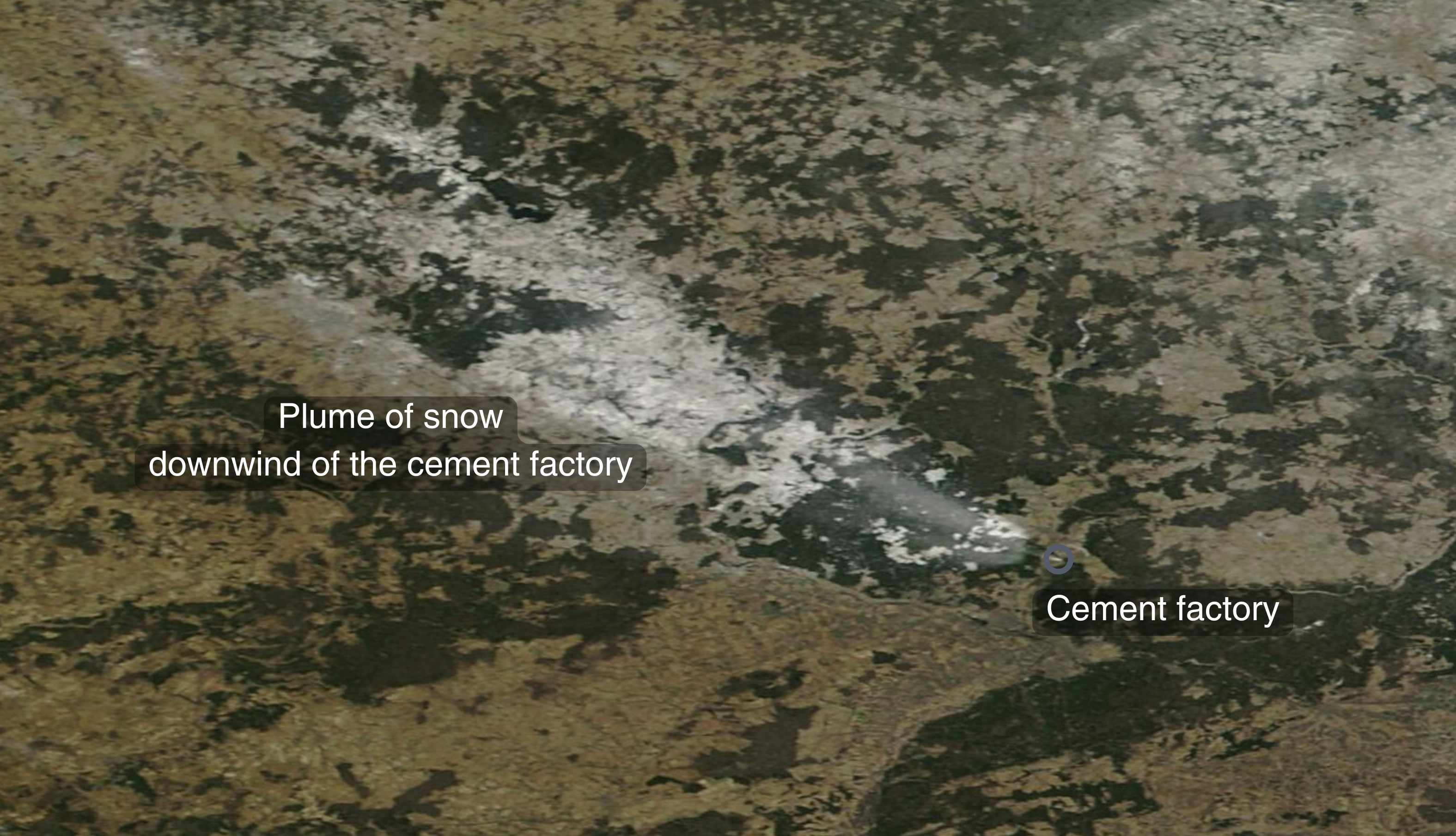Have you ever felt that snow only seems to fall in certain places? Perhaps you missed out on snow days as a kid, while your friend always seemed to be snowed in. Did your pal happen to live near a factory? Because new research suggests that might explain why.
The study, which was conducted by a multi-institution team of researchers, proposes that tiny particles of pollution produced by industrial sites, like factories and coal-fired power plants, can trigger something called cloud glaciation at temperatures between -10°C and -24°C (14 and -11 °F).
This process is the transformation of supercooled droplets of water that make up clouds into ice crystals. According to the researchers, aerosolized pollutants can kickstart this process by acting as the center, or nucleus, for the formation of the ice crystals – though the water vapor and heat produced by industry might also play some sort of part.
The team came to this conclusion by taking an in-depth look at near-infrared satellite imagery taken by Moderate Resolution Imaging Spectroradiometer (MODIS), a sensor instrument on NASA’s Terra research satellite.
In it, they found that something unusual was happening to the clouds they observed downwind of 67 industrial sites emitting aerosols. Not only was there decreased cloud coverage, but there were also fewer liquid clouds. Instead, ice clouds were forming at their expense.
Looking at precipitation data, the team discovered that the result of this was more snowfall in the areas local to the industrial sites.
“The glaciation-induced snowfall greatly affected precipitation amounts close to the studied industrial aerosol sources,” the researchers wrote in the paper describing the findings. “Daily snowfall accumulations due to glaciation events reached 15 mm, whereas snowfall intensity was 1.2 mm/ hour on average.”

The satellite image shows a plume of snow on the ground downwind of the Fokino cement plant in Russia.
Image credit: V. Toll, et al
That’s potentially a significant problem for the people who live in these areas.
“We already knew about the health impacts of air pollution, but we now know that factory smoke can turn rain clouds into snow clouds when it’s cold enough. This can cause unexpected snowfall that other areas don’t get,” explained Professor Nicolas Bellouin, one of the study’s co-authors, in a statement.
“A single event can dump over half an inch of snow across an area bigger than a city. This means communities downwind of factories might need to be better prepared for sudden snow, especially in winter.”
This cloud glaciation might also have wider implications for the planet’s climate. Clouds play a part in reflecting sunlight back into space; when the team compared the level of this reflection in the two different cloud types, they found that ice clouds reflect 14 percent less sunlight than liquid clouds.
The study authors caution, however, that more research is needed to fully understand the role that aerosols play in cloud glaciation and the potential consequences for the climate.
The study is published in Science.
Source Link: Bizarre Weather Phenomenon Might Explain How Factories Trigger Snowfall